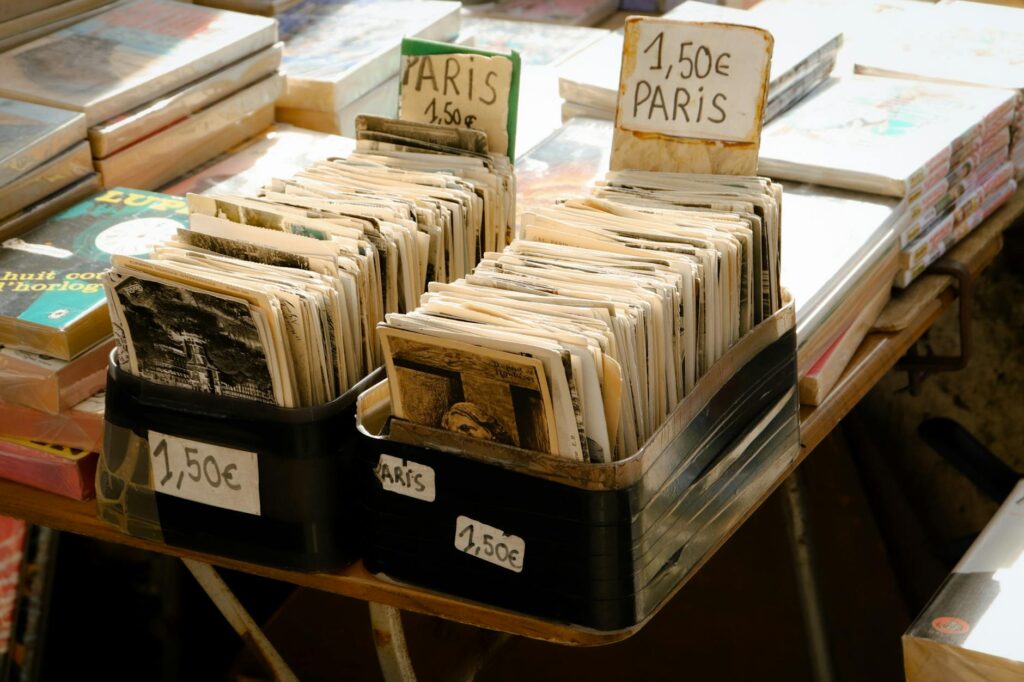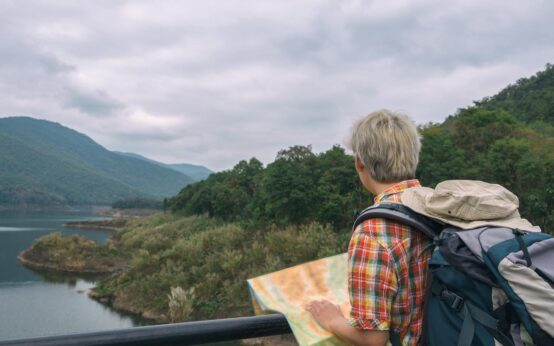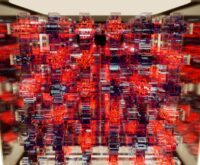The Art of the Digital Postcard: A Guide to Mindful Photo Sharing
Remember the last time you went on vacation? You probably took hundreds, maybe even thousands of photos. They live on your phone, a massive, un-sorted digital pile. And when it came time to share, what did you do? Did you dump the ten ‘best’ ones into a carousel post with a generic caption like “Take me back!”? We’ve all done it. It’s the default. But what if there was a better way? A more intentional, more meaningful approach? Welcome to the art of mindful photo sharing, a practice that transforms your photos from mere digital clutter into what I like to call ‘digital postcards’. It’s about sending a piece of your experience, a story, a feeling—not just broadcasting an image for fleeting validation.
Key Takeaways: This post is your guide to transforming how you share photos online. You’ll learn what a ‘digital postcard’ is, how to define your intention before posting, practical tips for curation and captioning, and discover how this mindful approach can reduce social media pressure and create deeper, more authentic connections with the people who matter most.
So, What Even *Is* a Digital Postcard?
Let’s get one thing straight. A digital postcard isn’t an app or a new social media platform. It’s a philosophy. It’s a mindset shift. Think about a real, physical postcard. You don’t send one to everyone you’ve ever met. You choose it carefully. The image on the front means something. You then flip it over and write a personal, concise message to a specific person. It’s a small, intentional act of connection. “Wish you were here.” “Thinking of you.” “You would have loved this.”
A digital postcard applies that same principle to the photos on your phone. It’s the opposite of a ‘photo dump’. It’s about selecting one single, powerful image that encapsulates a moment, a feeling, or a story you genuinely want to share. And crucially, it’s paired with a caption or message that gives it context and meaning, addressed to a specific audience, even if that audience is broad. It’s the difference between shouting into a void and having a quiet, meaningful conversation.
Instead of a 10-photo album of your beach trip, a digital postcard might be a single shot of your bare feet in the sand at sunset. The caption wouldn’t be “Beach vibes.” It might be something like, “I spent ten minutes just watching the waves erase my footprints today. It was a powerful reminder that it’s okay to let things go. Feeling so grounded.” See the difference? One is a broadcast. The other is a shared reflection. One is for likes; the other is for connection.

The “Why”: Finding Your Intention Before You Post
The first step in practicing mindful photo sharing is the simplest, and yet the one we most often skip. It’s the pause. Before your finger hits that ‘share’ button, you need to ask yourself one crucial question: Why am I sharing this?
The answer isn’t always deep or profound! Sometimes the answer is simply, “Because this is hilarious and I want to make my friends laugh.” And that’s a fantastic reason. But getting into the habit of asking ‘why’ filters out the mindless, compulsive sharing that often leaves us feeling empty or anxious. It’s about moving from reaction to intention.
Who Are You Sharing With?
Your audience dictates everything. Are you sending a silly, blurry photo of your cat to the family group chat? The context is intimacy and humor. Are you posting a polished, professional headshot to your LinkedIn profile? The context is career and credibility. Are you sharing a vulnerable moment on your personal Instagram? The context is connection and authenticity.
We often use a single platform, like Instagram, to speak to all these different audiences at once, which is where things get tricky. A digital postcard mindset encourages you to tailor the message. Maybe that beautiful, quiet landscape photo isn’t for your main feed. Maybe it’s a digital postcard you text directly to your mom with the message, “This view made me think of our hikes together.” That direct, personal share can mean so much more than a hundred public likes. It’s about delivering the right message to the right people in the right way. It’s about quality of connection, not quantity of viewers.
What’s the Story You’re Telling?
Every single photo has a story embedded within it, whether you articulate it or not. It’s not just a picture of a coffee cup. It’s a picture of the first quiet moment you’ve had to yourself all week. It’s the delicious reward after a grueling morning. It’s a catch-up with a friend you haven’t seen in years. Without that context, it’s just another picture of a latte. With that context, it becomes a story your friends can connect with.
Your job as the sender of the digital postcard is to be the storyteller. You don’t need to write a novel, but you do need to provide the ‘why’. What happened just before or just after this photo was taken? What sound or smell does this image evoke for you? What did you learn in this moment? This is where the magic happens. This is how an image becomes a memory shared, not just an image viewed.
How Do You Want Them to Feel?
This is the final layer of intention. When your friend, follower, or family member sees this post, what emotion do you hope to evoke? Is it joy? Inspiration? A sense of peace? Nostalgia? Curiosity? Understanding this helps you craft your entire postcard, from the image selection to the words you use.
If you want them to feel the peace of a quiet morning, you probably won’t choose a chaotic, blurry photo or write a caption full of exclamation points. You’ll choose a calm image and use words that reflect that serenity. This isn’t about manipulation; it’s about clear and empathetic communication. You’re packaging a feeling and sending it to them, hoping they can unwrap it and feel it, too. It’s a gift.
Crafting Your Postcard: A Practical Guide to Mindful Photo Sharing
Okay, the philosophy is great. But how do we actually do this? Let’s get practical. Turning your vast camera roll into a collection of meaningful digital postcards requires a few key skills. It’s less about being a professional photographer and more about being a thoughtful curator of your own life.
Curation Over Volume: The Power of One
We’ve been trained by the ‘photo dump’ culture to believe more is better. A ten-photo carousel must be ten times better than a single photo, right? Wrong. Often, it’s ten times more diluted. When you present someone with ten images, you’re asking them to do the work of finding the meaning. When you present them with one, you’ve done the work for them. You’ve said, “Out of this entire experience, this is the moment that mattered. This is the story.”
- Resist the Carousel: Challenge yourself. For your next trip or event, try to tell the entire story with just one or two photos. This forces you to be incredibly discerning and to identify the truly resonant moments.
- Find the “Hero” Shot: Look through your photos and find the single image that makes you feel something most strongly. It might not be the most technically perfect photo, but it has the most heart. That’s your hero.
- Embrace Negative Space: Both in your photos and on your feed. A single, powerful post followed by a day or two of silence is much more impactful than a constant stream of mediocre content. Let your moments breathe.
The Caption is Your “Wish You Were Here”
The caption is where you write the back of the postcard. It’s where you turn an image into a message. A great caption provides context, emotion, and a point of connection. A bad caption is an afterthought.
- Start with a Hook: The first sentence matters most. Ask a question, state a surprising fact, or share a vulnerable feeling.
- Tell a Micro-Story: Use the “What’s the story?” prompt we talked about earlier. Give us the before, the during, or the after. “I almost didn’t climb this hill, but my friend pushed me. So glad she did. This was the view that was waiting for us.”
- End with Connection: Invite a response. Ask a question. “Have you ever felt that way?” or “What’s a small moment of peace you found this week?” This turns a broadcast into a conversation.

The Art of the Edit: Enhance, Don’t Deceive
Editing your photos isn’t about faking reality. It’s about making the photo on the screen look more like how the moment felt in your heart. Sometimes the camera can’t quite capture the warm glow of a sunset or the vibrant colors of a market. A little tweak to brightness, contrast, or warmth can help bring that feeling to life.
The key is subtlety. The goal is to enhance the mood, not to create an entirely new, artificial one. Think of it like seasoning a dish. A little salt can bring out the flavors that are already there; too much ruins the meal. Your edit should support the story you’re telling, not become the story itself.
“The most important thing to remember is that you’re not just sharing a photo. You’re sharing a piece of yourself. Be intentional, be authentic, and be kind—both to your audience and to yourself. That’s the core of mindful sharing.”
The Ripple Effect: How Mindful Sharing Changes Everything
This might all sound like a lot of work for a simple photo post. But the benefits of adopting a digital postcard mindset are profound and they ripple out into many areas of your life. When you stop chasing likes and start cultivating connection, the entire experience of being online changes.
For you, the creator, the pressure evaporates. You’re no longer performing. You’re sharing. You start to experience your own life more fully, because you’re present in the moment, looking for the feeling, not just the ‘shot’. Your digital photo album becomes a curated collection of meaningful memories, not a junk drawer of random snapshots. It’s a practice in digital minimalism and mindfulness that reduces anxiety and increases your enjoyment of both your real life and your digital one.
For your audience, the a-ha moment is just as big. They are freed from the firehose of content. Your posts become a welcome sight, a moment of genuine connection in a sea of noise. Friends and family feel seen and valued when you share with them directly. Engagement becomes more meaningful—comments become conversations. You’re contributing to a better, kinder, more human internet, one postcard at a time.
Conclusion
The digital world isn’t going anywhere. The urge to capture and share our lives is a deeply human one. But we’ve lost our way, trading connection for content, and meaning for metrics. The art of the digital postcard is a simple, powerful way to find our way back. It’s a conscious choice to slow down, to be intentional, and to prioritize the human element in our digital interactions.
So the next time you’re about to post, take a breath. Pause. Look at your photo and ask yourself: What’s the story? Who is this for? What feeling do I want to send? Don’t just post a picture. Send a postcard. You might be surprised by the connections that come back to you.



 Discover Serenity: 7 Peaceful Architectural Styles
Discover Serenity: 7 Peaceful Architectural Styles  Beat Museum Burnout: Enjoy Your Visit Without Exhaustion
Beat Museum Burnout: Enjoy Your Visit Without Exhaustion  A Guide to the World’s Most Beautiful Fountains
A Guide to the World’s Most Beautiful Fountains  World’s Most Peaceful Public Transportation Systems: A Guide
World’s Most Peaceful Public Transportation Systems: A Guide  Ancient Wewas of Sri Lanka: A Timeless Water Legacy
Ancient Wewas of Sri Lanka: A Timeless Water Legacy  Plan an Epic Solar Eclipse Vacation: Your Ultimate Guide
Plan an Epic Solar Eclipse Vacation: Your Ultimate Guide  Crypto Swing vs Day Trading: Which Style Wins?
Crypto Swing vs Day Trading: Which Style Wins?  A Guide to NFT Generative Art Platforms (2024)
A Guide to NFT Generative Art Platforms (2024)  Crypto’s Carbon Footprint: The Real, Nuanced Story
Crypto’s Carbon Footprint: The Real, Nuanced Story  Join a Web3 Community: The Ultimate Networking Guide
Join a Web3 Community: The Ultimate Networking Guide  What Are AMMs? Automated Market Makers Explained Simply
What Are AMMs? Automated Market Makers Explained Simply  NFT Legal Questions Answered: A Simple Guide
NFT Legal Questions Answered: A Simple Guide